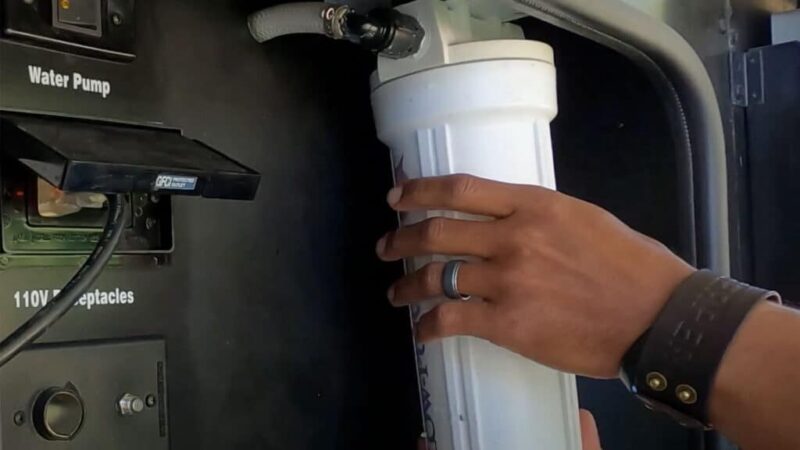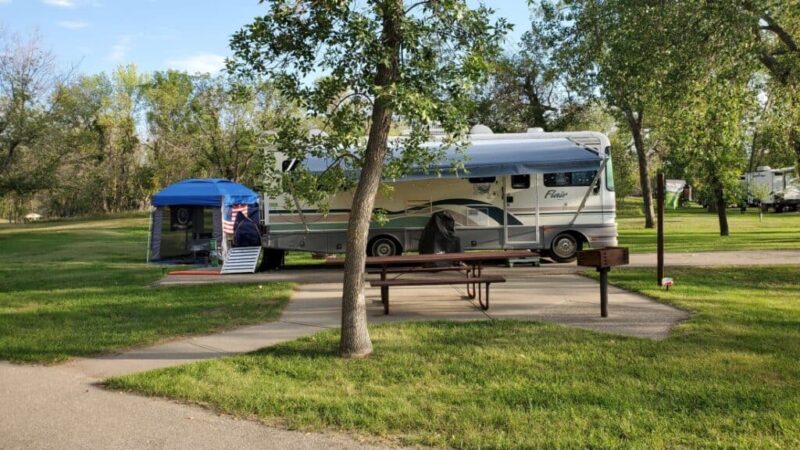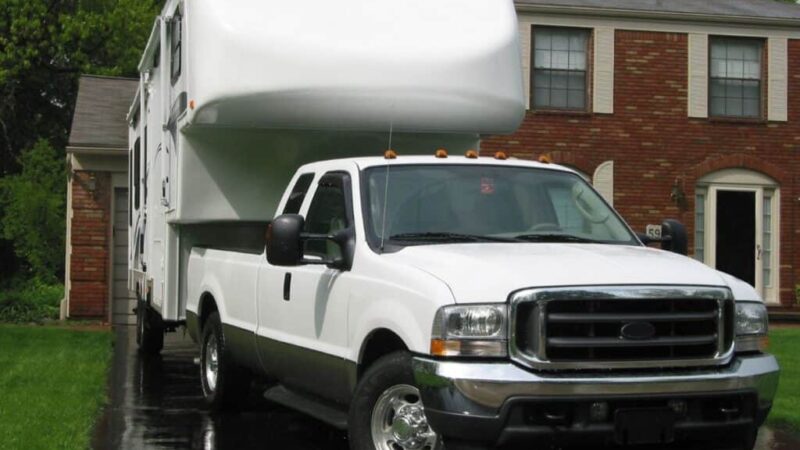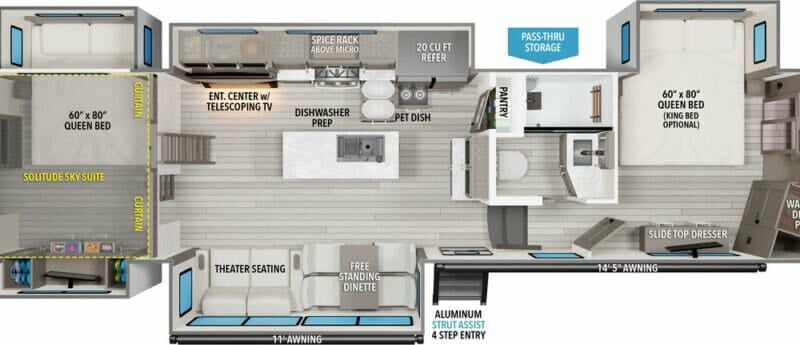What To Do If You’re Hydroplaning In Your RV
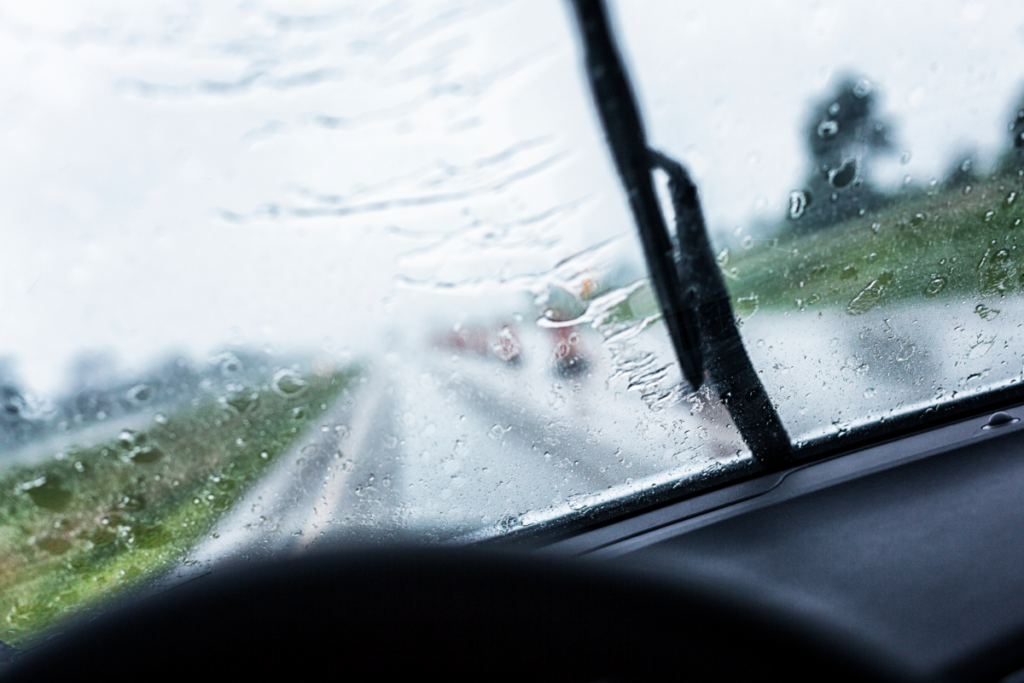
If you hydroplane in your RV, you need to stay calm and follow a few simple instructions.
Is Your RV Hydroplaning? Here’s What To Do
Driving your RV during or after a rainstorm brings extra hazards with it like reduced traction and visibility. Perhaps the greatest hazard when driving in wet conditions is hydroplaning.
Hydroplaning in your RV is extremely dangerous, and it can be a harrowing event if it happens to you. Thankfully, there are some things you can do to make yourself safer when hydroplaning.
Let’s take a look at what hydroplaning is and what to do if you’re hydroplaning in your RV.
What is hydroplaning and what causes it?
Wet pavement is the greatest weather-related hazard. 73% of all weather-related crashes occur fully or partially due to wet pavement. The reduced traction on wet pavement can cause several different issues, the most dangerous of which is hydroplaning.
Hydroplaning happens when a layer of water forms between your tires and the road. The layer of water greatly reduces your traction and causes your RV to skid, resulting in a loss of control.
If you start hydroplaning, you’ll immediately feel it. Your ability to feel the road beneath you when holding the steering wheel, or “road feel,” will suddenly reduce or disappear completely. If you feel like your RV is floating or moving on its own, or your steering wheel suddenly feels unresponsive, you’re likely hydroplaning.
Hydroplaning is most common during and after heavy rains, where lots of water can gather on the pavement. The deeper the water on the road is, the more likely you are to hydroplane. Your RV is also more likely to hydroplane if you’re traveling at high speeds and if your tire treads are worn down.
What you should do if you’re hydroplaning in your RV
Hydroplaning is a scary experience, and in a worst-case scenario, can lead to serious accidents. Thankfully, there are some things you can do if you end up hydroplaning in your RV.
No matter if you’re driving a motorhome or towing a trailer, the first and most important step remains the same: take a deep breath and stay calm. While hydroplaning can be scary, flying into a panic will only make things much worse. Many people’s instinct when they start hydroplaning will be to slam on the brakes, but this is the last thing you should do when you hydroplane.
When hydroplaning, ease your foot off the gas and then gently pump your brakes to slow down. If you have an anti-lock braking system (ABS), you can brake as normal and your car will automatically pump the brakes for you.
Generally, you should also keep the steering wheel straight and avoid suddenly turning one way or the other. If you find yourself skidding to the side, gently steer in the direction of the skid to realign your tires, then steer in the other direction to straighten out your RV.
If you’re towing a travel trailer or other towable RV, the good news is the extra weight will make you less likely to hydroplane. However, it is still possible to hydroplane while towing an RV.
So, if you do end up hydroplaning while towing, your trailer will likely begin to sway. Just as before, avoid panicking and avoid reacting to the trailer sway by steering hard in either direction.
Instead, do the same as you would in any other hydroplaning situation: let off the gas, slowly pump the brakes, and regain control of your vehicle.
You’ll know you’ve regained control of your RV because your road feel will return to normal and your steering wheel will once again feel responsive. After regaining control, it’s a good idea to pull over for a moment and catch your breath. Hydroplaning can induce a lot of anxiety, so don’t be afraid to calm down for a moment before resuming your journey.
How to prevent hydroplaning
Instead of reacting at the moment to try and regain control when hydroplaning, a much better option is to prevent hydroplaning completely. There are plenty of steps you can take to avoid hydroplaning and keep yourself safe on the road.
Maintain your vehicle & RV tires
The most important thing for protecting yourself from hydroplaning and staying safe on the road, in general, is maintaining your tires. If your tire tread is too low, it significantly increases the chances you’ll hydroplane.
A common way to check your tire tread is the penny test. Stick a penny with Lincoln upside down into the tread of your tire. If it doesn’t touch Lincoln’s head, your tread is dangerously low and your tires need to be replaced.
Make sure you keep track of all your RV maintenance and repairs with an online tool such as RV LIFE Maintenance. Not only can you keep all of your documents in one place, but you’ll also receive timely reminders when maintenance is due to help you avoid costly repairs and potentially serious accidents.
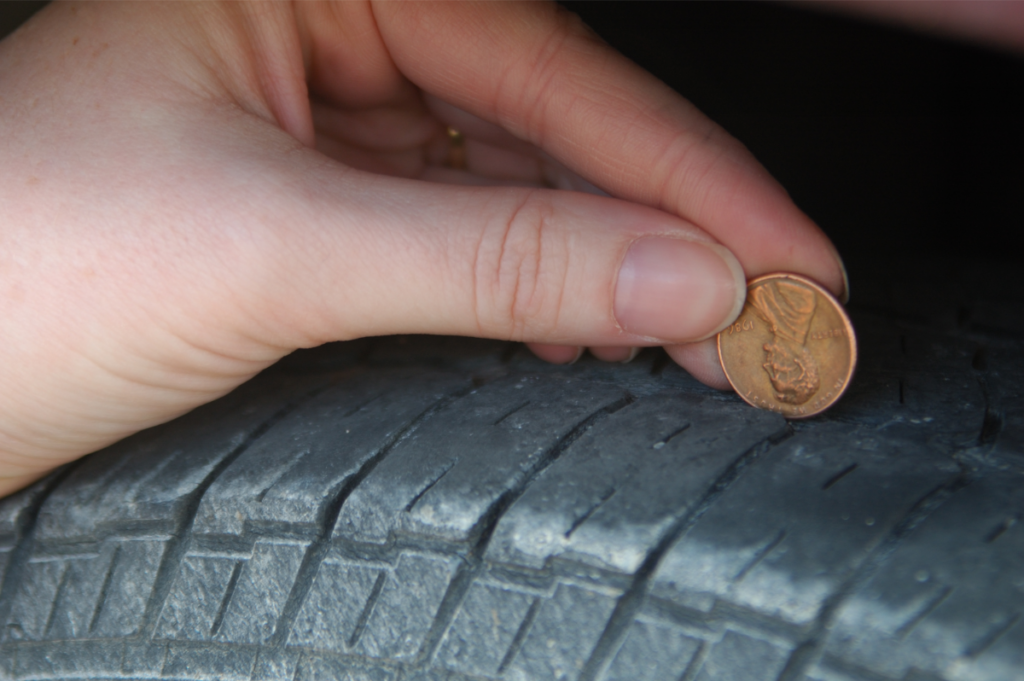
The “penny test” is a great way to test for worn-down, hydroplaning-prone tires
Drive slower in wet conditions
Another way to prevent hydroplaning is to drive slower in wet conditions. The slower you drive, the less chance there is that you’ll hydroplane. If you’re on a multi-lane highway, middle lanes are usually the driest, so stick to middle lanes over the far left or right lanes when you can.
Pull over
If conditions get especially treacherous, consider pulling over to the side of the road until conditions improve. Or if you see nasty weather in the forecast, consider postponing the day’s drive.
Severe weather conditions bring other dangers besides hydroplaning, such as reduced visibility and strong winds that can reduce your control of the vehicle or even tip it over.
Avoid using cruise control
One last point is to avoid using cruise control when it’s raining. As convenient as it is, your cruise control likely isn’t designed to prevent or react to hydroplaning. Instead, maintain full control over your RV in inclement weather and wet conditions to ensure you can react if things go bad.
Plan an RV-safe route
Now you know what to do if you’re hydroplaning in your RV.
When you hydroplane, take your foot off the gas, gently pump your brakes, and keep your steering wheel steady. If you find yourself skidding to the side, gently steer into your slide, then steer back the other way to regain control.
Hydroplaning is frightening, without a doubt. But by keeping a calm head and following a few guidelines, you can regain control of your vehicle and make it to your destination safe and sound.
For help mapping out your route for your next RV getaway, look no further than RV LIFE Trip Wizard. This online planning tool makes it easy to plan an RV-safe route. It can also locate interesting sites along the way, all according to your travel preferences. Get RV LIFE Trip Wizard with its accompanying RV LIFE App, and start planning your adventure today!
Related articles:
The post What To Do If You’re Hydroplaning In Your RV appeared first on RV LIFE.


